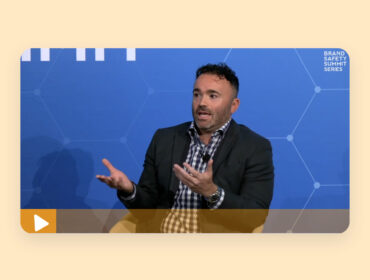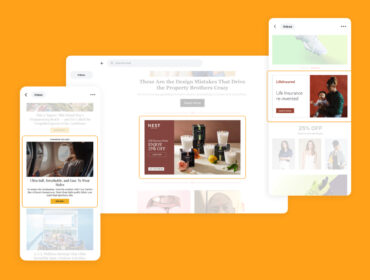Real Time Banter: How to Prepare for Upcoming Privacy Changes
In this webinar, LiveIntent SVP of global marketing, Kerel Cooper, and VP of marketing, Nick Dujnic, speak with Sarah Polli director of martech solutions at Hearts & Science, about the death of the third-party cookie and how to prepare for upcoming privacy changes. Polli provides the perspective of both a marketer and publisher, having spent five years at The Washington Post.
Key Insights from Sarah Polli
Polli spends a large part of her day helping clients prepare for the death of the third-party cookie.
“I think for some clients, particularly those that have unfortunately been hit so hard by the pandemic, it might be on their back burner. Others who’ve put projects on pause now have time to actually dig into it because – regardless of what is going on in the world – this is still happening.”
She’s also speaking with clients about ongoing privacy changes, which will affect their data collection, marketing, and targeting. CCPA, for example, is supposed to be enforced on July 1, but recent news indicates that it might be pushed to October 1. In addition to that, CCPA 2.0 is being actively pushed, and may be on the California ballot in November.
“It’s crazy that we are a month away and we’re still saying, ‘Is this happening? What do we do?’ It’s still a wait-and-see game.”
Another issue is whether consumers will delete their data and prevent companies from collecting valuable information about them. Polli, however, doesn’t believe we’ll see the big drop-off that brands and publishers are fearing.
“I attempted to request for my data to be deleted, and it was quite an exercise. It’s really cumbersome. Even within Facebook, it took four clicks to have my data removed – and that’s just for data going forward, not back data. Then you have to go to every individual website and they all have their own policies.”
Out of 11 sites she tried, only two or three completely removed her data, and that took up to two months.
“I would definitely encourage brands to look at the percentage of completed requests for deletion. I think that number will give us an idea of how the audience segments will be impacted. And then we can extrapolate and estimate that, for example, we might have a loss of 5%, which is much more digestible than 30%.”
Also, just because someone asks for their data to be deleted doesn’t mean they can’t still have ads served to them.
“They will still get ads based on the way the law is written and our ability to track. They just won’t be targeted based on their behavior and their information. I think it will be interesting to see if brands get complaints from people.”
This is just another reason why brands should prioritize first-party data and building direct relationships with their audiences. General Mills, for example, essentially built a publishing wing for its content marketing, sharing relevant recipes and articles that help drive subscriptions.
“We believe that first-party is the new gold. It’s going to be critical. We understand not every brand is able to capture first-party data, particularly CPG clients. So for clients that can, we’re really talking to them and trying to understand how are they collecting data and how could they potentially be layering new on top of that.”
Polli is also working with brands to build out customer data platforms.
“I think some brands are trying to build out all the compliance tools themselves and if a lot of consumers get on board and say they don’t want all of their information shared, they’re going to have massive backup. They’re going to need something to help process that. So, as a team, we’re really educating ourselves in the CDP world to help guide our clients as they start to dive into that space.”
Best practices for preparing for the death of the third-party cookie
- Choose platforms that are identity-based instead of cookie-based. “The whole industry has been built off cookies forever. [That’s going to change and] that timeline is now essentially a year and a half away, and we’re already going to see implications on Chrome. The data transfer file is already decreasing in value because now we can’t track down to an individual level.”
- Look into data clean rooms and their uses. “We’re educating clients on those clean rooms like Google’s Ads Data Hub and Facebook’s Advanced Analytics. Amazon is working on theirs right now, and I’m sure a slew of other ones are coming out.”
- Use Safari as a test for what’s to come. “See what you can learn from the impact because the Safari users are still very, very valuable. What insights can you gain from there in order to prepare and start to strategize for when this is the norm?”
- Align the company to consolidate first-party data collection and execution strategies. “The whole point of a CDP and being built off one ID is that all of the siloed data for an entire organization would go into one place – emails, direct mail, etc. But that’s not happening right now. The biggest challenge for us is to get the whole organization connected and talking the same language to push everyone forward in order to be future proof.”
Sign up for more Real Time Banter and other industry insights with the LiveIntent newsletter.


